Statin Symptom Tracker
Track your symptoms during different medication periods to see if you're experiencing the nocebo effect. Based on the SAMSON study, which found 90% of reported statin side effects occurred during placebo periods.
Your Symptom Pattern
More than 39 million Americans take statins every year to lower cholesterol and reduce the risk of heart attacks and strokes. But here’s the problem: nearly half of them stop taking them within the first year. Why? Because they say the drugs give them muscle pain, fatigue, or weakness. Sounds straightforward, right? Except the science says something very different.
What You Think Is Statin Pain Might Be Your Mind
The real culprit behind most statin side effects isn’t the drug itself-it’s the nocebo effect. That’s when you feel sick not because of a chemical reaction, but because you expect to feel sick. It’s the opposite of the placebo effect. Instead of feeling better because you believe a pill will help, you feel worse because you believe it will hurt you. This isn’t just theory. In 2021, a landmark study called SAMSON-led by researchers at Imperial College London-put this idea to the test. They enrolled 60 people who had quit statins because of side effects. Each person took 12 bottles over a year: four with statin, four with dummy pills (placebo), and four empty (no pill). All bottles looked identical. Patients tracked their symptoms daily using a smartphone app, rating pain on a scale from 0 to 100. The results were shocking. Symptoms during statin months? Average score of 16.3. Symptoms during placebo months? 15.4. Symptoms during no-pill months? Just 8.0. That means when people thought they were taking statins, they felt just as bad when they were actually taking sugar pills. And when they weren’t taking anything at all, their symptoms dropped by nearly half. The nocebo ratio? 90%. In other words, nine out of ten symptoms people blamed on statins were happening even when they weren’t taking the drug.Why Do Statins Trigger This More Than Other Drugs?
Statins are uniquely vulnerable to the nocebo effect. Why? Because of the noise around them. You’ve probably seen ads warning about muscle pain. You’ve read forum posts from people saying, “I took statins and couldn’t walk.” You’ve heard friends say, “My mom quit statins-she felt awful.” All that information gets stored in your brain before you even take the first pill. Compare that to other medications. If you’re prescribed a blood pressure pill, no one’s telling you it’ll make your legs feel like lead. But statins? The warnings are everywhere. And the more you know about possible side effects, the more likely you are to notice normal aches and blame them on the drug. A 2021 meta-analysis of over 18,000 people in blinded trials found no difference in muscle pain between statin and placebo groups. But in real-world, non-blinded studies-where patients know they’re taking statins-up to 20% report muscle symptoms. That gap? That’s the nocebo effect in action.What About Real Muscle Damage?
You might be thinking: “But what about the people who actually get hurt?” Good question. There are cases where statins cause real muscle damage-called statin-associated myopathy. But they’re extremely rare. About 5 in every 10,000 people on statins develop noticeable muscle problems. Rhabdomyolysis, the most severe form, happens in fewer than 1 in a million people per year. That’s less likely than being struck by lightning. The SAMSON study deliberately excluded these patients. They only included people with subjective symptoms-aches, fatigue, stiffness-not lab-confirmed muscle damage. So when we say 90% of symptoms are nocebo, we’re talking about the vast majority of people who quit statins because they “feel bad,” not those with confirmed biochemical injury. If you’ve had CPK levels sky-high or real muscle weakness confirmed by blood tests, then yes-this doesn’t apply to you. But if you just feel tired or sore after starting statins, and you’ve read about it online, chances are your brain is playing a trick on you.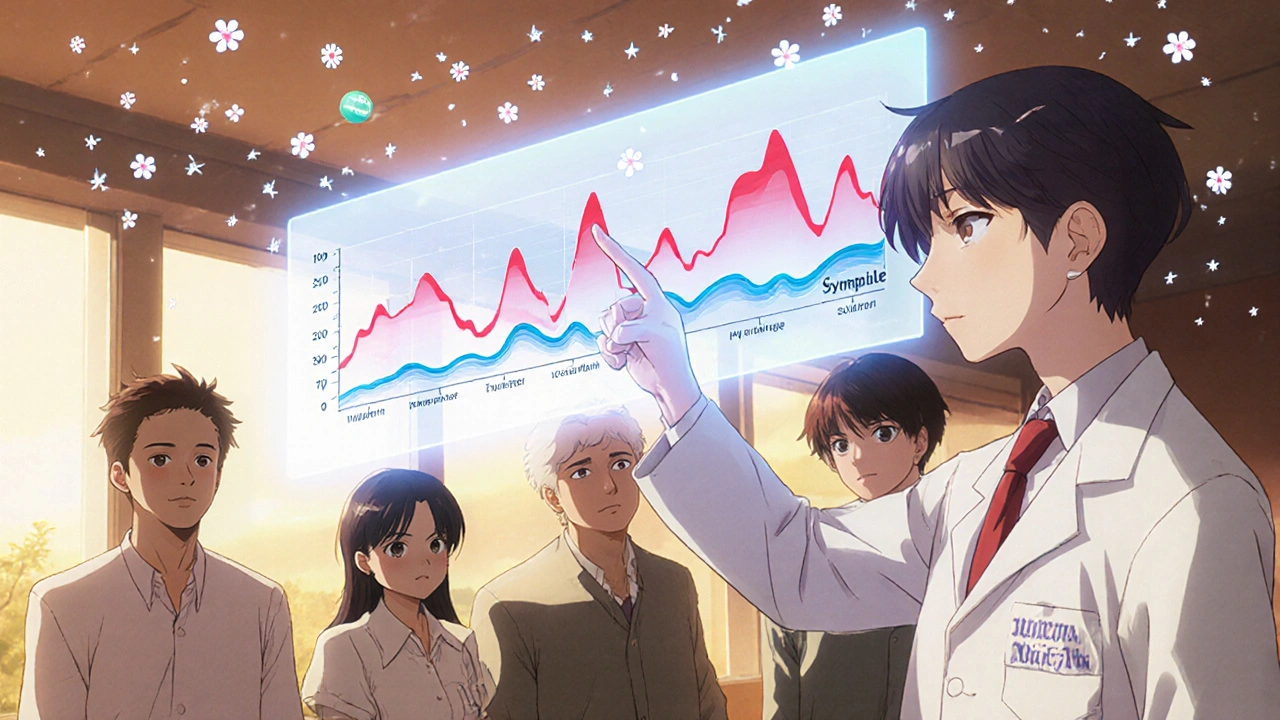
How Doctors Are Using This to Help Patients
The SAMSON trial didn’t just prove the nocebo effect-it gave doctors a tool to fix it. The study used a simple method: show patients their own data. After 12 months, participants saw graphs of their symptoms across statin, placebo, and no-pill periods. And guess what? Half of them went back on statins. Why? Because they saw it clearly: their pain didn’t come from the drug. It came from expecting the drug to hurt them. Once they understood that, they could make a different choice. Cardiologists are now using this approach in clinics. Instead of just saying, “It’s all in your head,” they show patients their symptom patterns. They explain the 90% statistic. They offer a trial: take a low-dose statin for a month, track symptoms, then switch to placebo for another month. Many patients, after seeing the data, feel empowered-not dismissed. A 2022 survey of 127 cardiologists found those who used this method had nearly double the statin restart rate compared to those who didn’t. And it’s not just happening in research hospitals. Pfizer, Amgen, and other drug companies now include nocebo education in their patient support programs.What You Can Do If You’ve Stopped Statins
If you stopped statins because of side effects, here’s what to try next:- Track your symptoms daily for a month. Use a simple app or notebook. Rate pain, fatigue, or stiffness on a scale of 0-10.
- Ask your doctor about a “n-of-1” trial: take statin for a month, then placebo for a month, then no pill. No blood tests needed.
- Start with a low dose. Rosuvastatin 5mg or atorvastatin 10mg often cause fewer symptoms.
- Don’t Google side effects right before taking your pill. That primes your brain to expect trouble.
- Give it time. Symptoms from the nocebo effect usually peak in the first week and fade after a few weeks-even if you keep taking the drug.
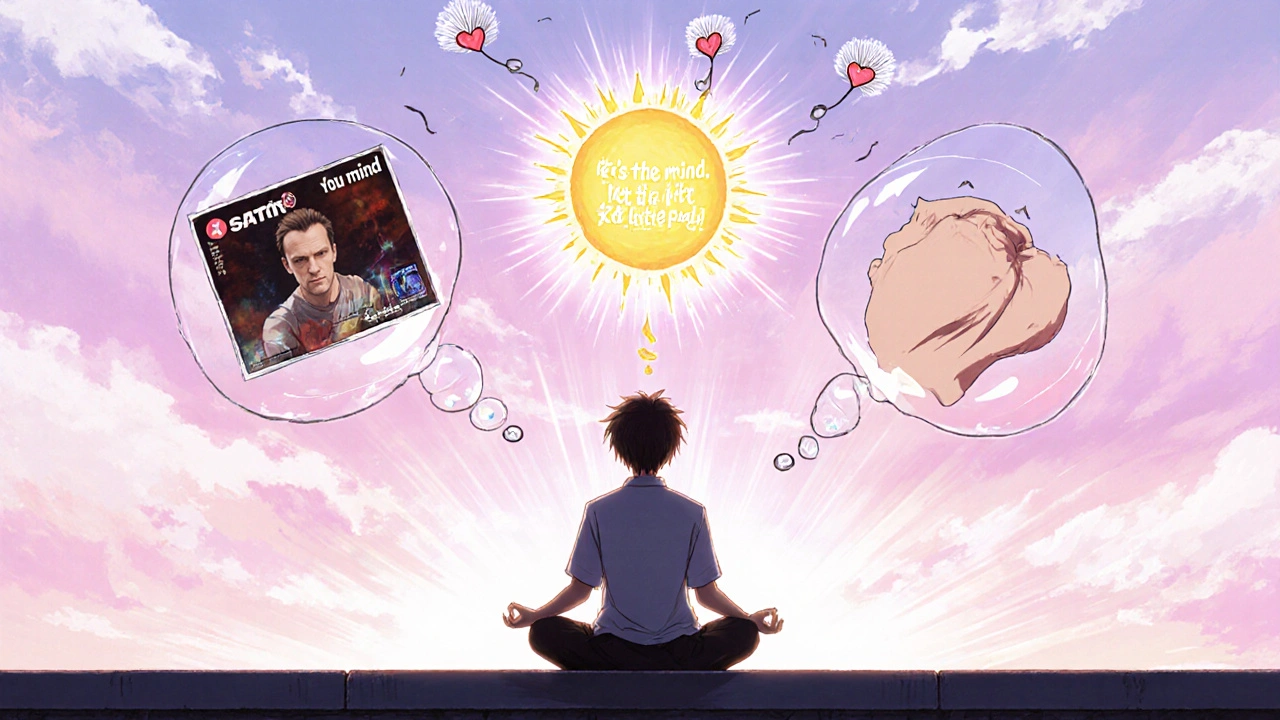
Why This Matters More Than You Think
Stopping statins because of perceived side effects isn’t just a personal choice. It’s a public health crisis. Every year, an estimated $11.2 billion is spent in the U.S. on preventable heart attacks and strokes because people quit statins. That’s not just money-it’s lives. The American Heart Association and American College of Cardiology now say: don’t assume side effects are from the drug. Test it. Track it. Rule out the nocebo effect first. And if you’re still in pain after a proper trial? Then look for alternatives-PCSK9 inhibitors, ezetimibe, or lifestyle changes. But for most people? The solution isn’t a different pill. It’s a different mindset.What Comes Next
Researchers are already building on the SAMSON trial. The SAMSON-2 study is testing whether digital cognitive behavioral therapy can help people rewire their expectations around statins. Apple and Google are partnering with universities to build symptom-tracking tools directly into Health and Fit apps. The future of statin therapy isn’t about stronger drugs. It’s about smarter conversations. It’s about helping people understand that feeling bad doesn’t always mean the medicine is bad. Sometimes, it just means your brain is listening too closely to the warnings.Are statin side effects real or just in my head?
For most people, yes-the side effects are real in how they feel, but not caused by the drug. The SAMSON trial showed that 90% of symptoms reported by statin users also happened when they took a placebo. This means your brain is reacting to expectations, not chemistry. That doesn’t make the pain fake-it means the cause isn’t the statin. For a small number of people, true muscle damage can occur, but it’s extremely rare.
If I feel better off statins, why should I try them again?
Because feeling better off statins doesn’t mean they’re causing your symptoms. Many people feel better during no-pill periods simply because they’re not expecting to feel bad. The real test is comparing how you feel on statin vs. placebo vs. no pill. If your symptoms are nearly identical on statin and placebo, then stopping the drug puts you at higher risk for heart attack or stroke-not because the statin hurts you, but because you’re not getting its protective benefits.
Can the nocebo effect be fixed without changing medication?
Yes. The most effective fix is education and self-tracking. Seeing your own symptom data-like how your pain was just as bad on placebo-is powerful. Many patients report that once they understand the nocebo effect, their symptoms fade over time. Some also benefit from brief cognitive behavioral techniques that help reframe how they interpret bodily sensations. You don’t need a new drug-you need a new understanding.
Is it dangerous to restart statins after quitting?
It’s not dangerous-it’s often life-saving. The risk of restarting statins after stopping due to perceived side effects is very low, especially if you start with a low dose and track symptoms. The bigger risk is staying off them. People who stop statins have a 20-30% higher chance of having a heart attack or stroke within five years. If you’ve had no lab-confirmed muscle damage, restarting is safe and recommended.
Why do doctors still warn about statin side effects if they’re mostly nocebo?
Because they have to warn about the real risks-even if they’re rare. If a doctor didn’t mention muscle pain, and a patient developed true myopathy, they could be held liable. But the way the warning is delivered matters. Instead of saying, “Many people get muscle pain,” better to say, “Most people don’t get side effects, but if you notice pain, we can test whether it’s the drug or your expectations.” The goal isn’t to scare you-it’s to give you the tools to tell the difference.



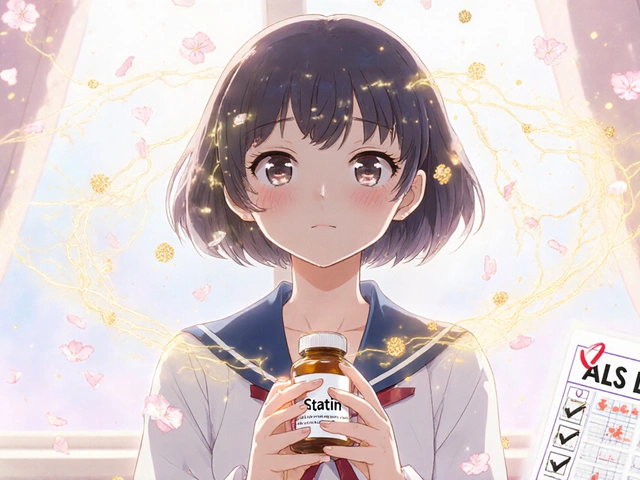

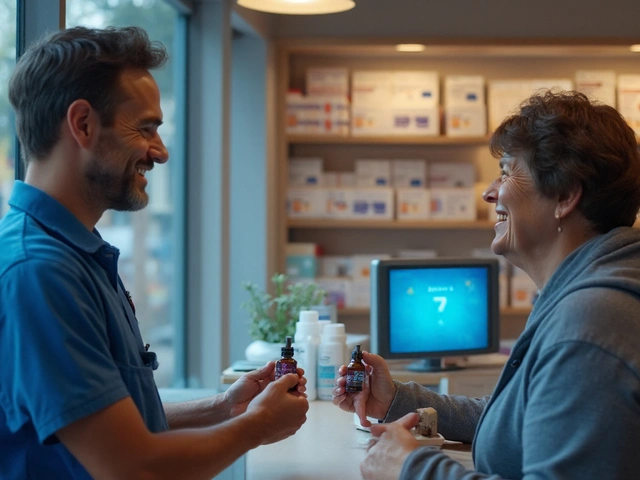
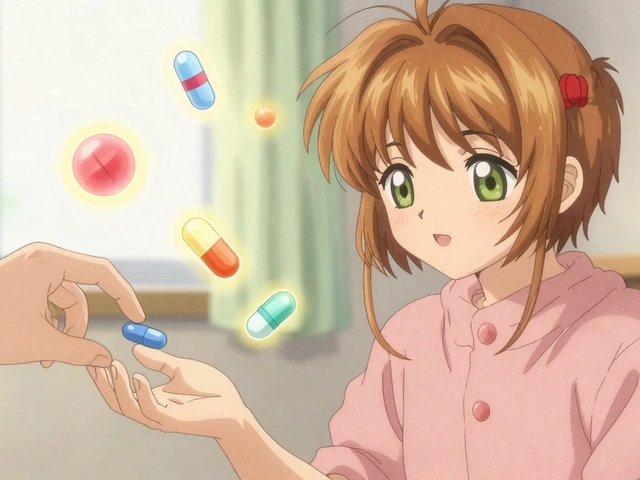
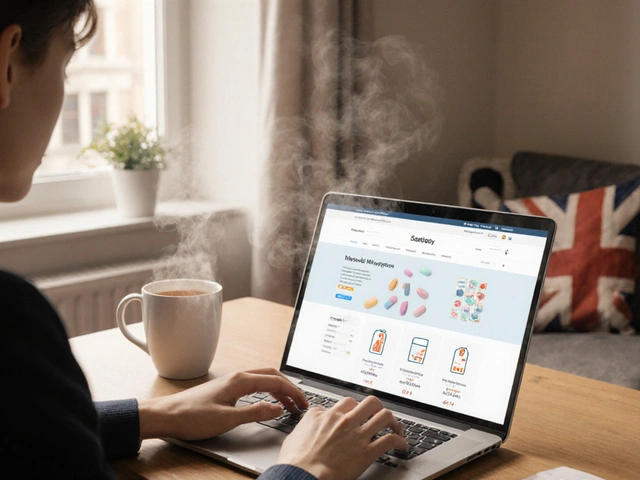


Shilah Lala October 29, 2025
Oh wow, so my muscle pain is just... my brain being dramatic? Like, I didn't know I was auditioning for a TED Talk on placebo theater. Next they'll tell me my hangover is just me expecting a headache. 😌
Christy Tomerlin October 30, 2025
Y’all are falling for Big Pharma’s brainwashing. Statins are poison. The government hides the truth. You think sugar pills fix heart disease? Wake up. My cousin died because he trusted doctors. 🇺🇸
Susan Karabin November 1, 2025
So you're telling me my body's just a mirror for the noise I've been fed? That's wild. I've been blaming statins for my fatigue for months but honestly... I also watched three documentaries about cholesterol being a scam. Maybe my brain just likes drama. I'll try tracking it. No judgment. Just curious. 🌱
Lorena Cabal Lopez November 1, 2025
Interesting. But you're ignoring the fact that people have real reactions. This feels like another way to gaslight patients into compliance. The data might be clean but the human experience isn't a spreadsheet.
Stuart Palley November 2, 2025
90% nocebo? That’s not science - that’s a marketing campaign wrapped in a lab coat. My knees hurt when I take statins. End of story. You want me to believe my mind is lying to me? Maybe your mind’s lying to you.
Glenda Walsh November 3, 2025
Wait, wait, wait-so if I feel tired after taking statins, it's because I read about it online? But what if I also have hypothyroidism? And my sister had rhabdo? And my doctor said my CPK was high? Did you even consider that maybe some people aren't just 'thinking too much' but actually have real biochemistry?!!??
Tanuja Santhanakrishnan November 4, 2025
Love this! So many of us in India have been told statins are dangerous - but what if the fear is louder than the drug? I tried tracking my fatigue for a month - turns out I felt worse on days I watched YouTube videos about statins. Mind blown 🤯. The real medicine here is awareness, not pills. Let’s normalize this conversation!
Raj Modi November 5, 2025
It is indeed a fascinating and scientifically robust demonstration of the nocebo phenomenon, particularly when contextualized within the broader framework of psychoneuroimmunology and cognitive behavioral conditioning. The SAMSON trial’s methodology, with its triple-blind, randomized, crossover design, effectively isolates the psychological component of somatic symptom reporting, thereby providing compelling evidence that patient expectations significantly modulate perceived adverse drug reactions. This has profound implications for clinical pharmacology and public health policy, as it suggests that reframing patient education protocols could substantially enhance medication adherence without altering pharmacological regimens.
Cecil Mays November 6, 2025
Y’all need to try this. I was skeptical too 😅 But I tracked my pain for 30 days - statin week: 6/10, placebo week: 5.5/10, no pill: 2/10. Mind. Blown. 🤯 I went back on statins and now I feel better than I have in years. It’s not magic. It’s your brain. And you can retrain it. 💪
Sarah Schmidt November 7, 2025
There’s a dangerous arrogance here - reducing complex human suffering to a statistical anomaly. The nocebo effect doesn’t erase pain. It just redefines it as ‘not real enough’ to warrant concern. And that’s the real tragedy: we’re not just ignoring symptoms, we’re moralizing them. If you don’t feel it the way the data says you should, maybe you’re just not thinking right. That’s not medicine. That’s control.
Billy Gambino November 8, 2025
The nocebo effect is a legitimate phenomenon, but conflating it with the totality of statin-related myopathy is a category error. The SAMSON cohort was deliberately selected for subjective complaints, excluding those with elevated CK or histological evidence of myopathy. To extrapolate the 90% statistic to all statin users is a fallacy of composition - the very error the study itself sought to avoid. The data are compelling, but not universal.
Karen Werling November 8, 2025
My grandma restarted statins after tracking her symptoms. She said, ‘I thought I was dying, but turns out I was just scared.’ 🤗 She’s hiking again. This isn’t about dismissing pain - it’s about understanding where it comes from. You’re not weak for feeling it. You’re human. And humans are wired to listen to warnings. Let’s help them unlearn the noise.
STEVEN SHELLEY November 9, 2025
THIS IS A GOVERNMENT COVERUP. THEY WANT YOU TO TAKE STATINS BECAUSE THEY MAKE BILLIONS. THE PLACEBO WASNT EVEN PLACEBO - IT WAS LACED WITH FLUORIDE AND NANOTECH. THE 90% IS A LIE. THEY PAID THE RESEARCHERS. YOUR BRAIN ISN’T PLAYING TRICKS - THEY ARE. CHECK THE PATENTS. CHECK THE FUNDING. STATINS ARE KILLING PEOPLE AND THEY WANT YOU TO BLAME YOURSELF. #STATINCONSPIRACY